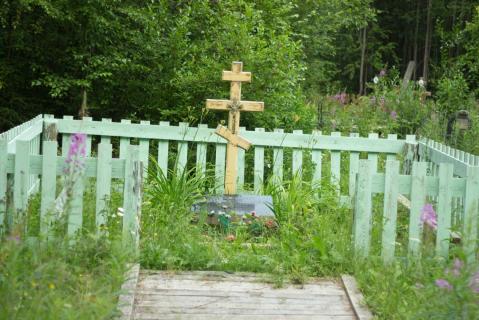From 1931 onwards, dekulakised peasant families from Central Russia, Ukraine, and the Volga German republic – and from other parts of the Komi republic – were sent to Noshul village.
In 1940 deported Polish citizens were moved to the special settlements of the Noshul village council. An orphanage was organised there for up to 50 pre-school children and a home for disabled Poles among those deported. Those who died were buried in the village graveyard in individual graves.
In 2000, the Priluzsky district administration established a memorial in the graveyard, a wooden cross over a granite slab that reads, “Never forget the victims of political repression”.
The Memorial online database (2025) lists 129,473 victims in the Komi Republic. (See Nizhny Chov.)
Among them were over 64,000 deportees sent to or born in the Republic. During collectivisation (1929-35) they numbered 20,366, a quarter of whom were aged 1-10. In 1940 there was a massive influx from occupied Polish territory (19,367). More, mainly Germans (5,970) were sent there in the 1940s and 1950s (6,699).
The database names 1,226 individuals who from 1930 onwards were deported to Noshul with their families. 68 were born in the Volga German Republic. The majority were deported in 1940 (1,032): a quarter were then aged between one and ten.
| Date | Nature of ceremonies | Organiser or responsible person | Participants | Frequency |
|---|---|---|---|---|
|
30 Oct.
|
Remembrance Day for the Victims of Political Repression
|
Noshul administration
|
Administration, relatives of victims, schoolchildren
|
Annual event
|
| State of burials | Area | Boundaries |
|---|---|---|
|
partially preserved
|
not determined
|
not delineated
|
[ original texts and hyperlinks ]
L.A. Maximova and V.A. Zhigalova, “Polish exile in the Komi republic’s Priluzsky district during the 1940s”, Hard Labour and Exile in the Russian North, St Petersburg / Arkhangelsk, 2004
Reply from the Priluzsky district administration (№ 01/13-3972 of 10 July 2014) to a formal enquiry by RIC Memorial (St Petersburg)

